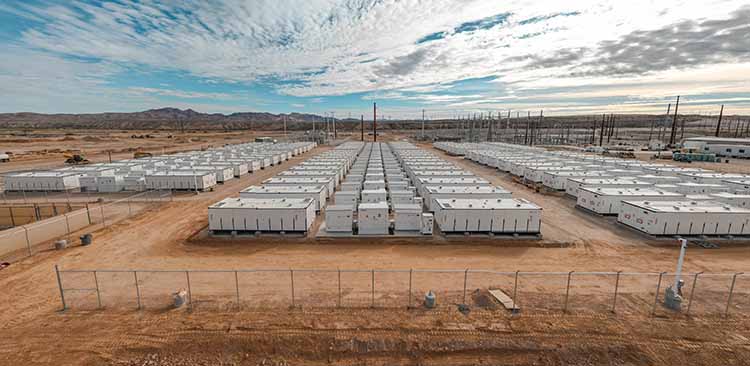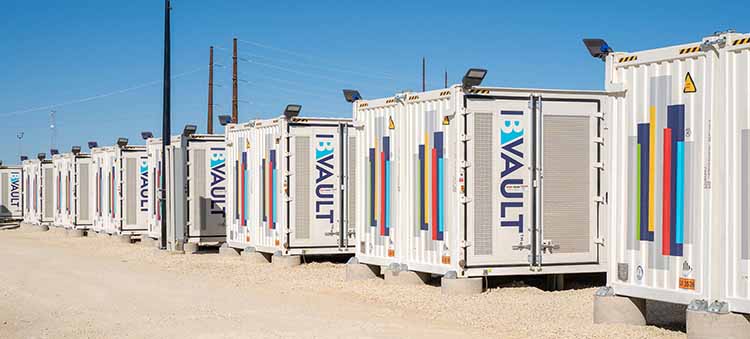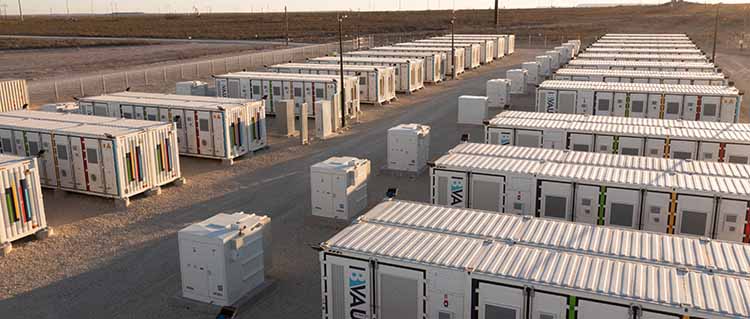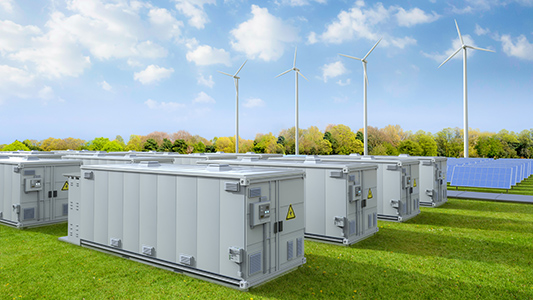India’s push for clean energy is a key factor to its progress, as the country’s strategic vision of transitioning to a low-carbon economy, enhancing energy independence, and driving sustainable economic growth are linked to the rapid adoption of renewable energy technologies, robust policy frameworks, and investments in green infrastructure. This includes scaling up solar and wind power capacities, advancing green hydrogen production, electrifying transport, and improving grid resilience with battery energy storage system (BESS) through smart technologies.
With rapid urbanization and industrialization, India’s energy demand is projected to be among the highest globally in the coming decades. To meet this need, India is building more renewable energy sources like solar and wind power. It is also working to use energy more wisely and update its power systems. The government has created important programs like the National Solar Mission, Green Hydrogen Mission, Rooftop Solar Scheme, and the National Bio Energy Mission. These efforts not only aim to reduce reliance on fossil fuels but also position India as a global leader in clean and resilient energy system.
Grid-Scale Battery Storage System
India’s clean energy transition centres on the large-scale deployment of grid-connected energy storage solutions to stabilize the growing share of renewable power. As solar and wind energy capacities expand rapidly, integrating robust energy storage systems (ESSs) has become essential to ensure consistent power supply, reduce curtailment, and enhance grid reliability.
The Indian government has taken several proactive steps to mainstream energy storage within the country’s energy framework. One of the most significant initiatives in this direction is the National Framework for Promoting Energy Storage Systems, introduced by the Ministry of Power. This framework is part of India’s broader strategy to reduce carbon emissions and increase dependence on clean energy sources. It offers multiple policy enablers, including exemption from inter-state transmission system (ISTS) charges for ESS usage, defined storage capacity requirements, and regulatory support for battery energy storage system (BESS) procurement. It also recognizes ESS as part of the harmonized master list of infrastructure, helping attract institutional investment.

India is undergoing a significant transformation in its energy landscape, shifting from a fossil fuel-dominated system to one increasingly powered by clean, and non-fossil sources. This transition aligns with India’s updated Nationally Determined Contributions (NDCs) under the Paris Agreement, wherein India has pledged to achieve 50% of its cumulative installed electric power capacity from non-fossil fuel-based energy resources by 2030. As of March 31, 2025, India’s total installed power generation capacity reached 483.26 GW. Of this, non-fossil fuel-based sources including solar, wind, hydro, bio-power, and nuclear accounted for 222.86 GW, representing approximately 46.1% of the total capacity.
As outlined in the National Electricity Plan 2023, India’s energy storage requirements are set to expand radically in the coming decades. Projections include:
- 2026-27: 16 GW / 82 GWh (comprising 7 GW / 48 GWh from Pumped Storage Plants and 9 GW / 35 GWh from BESS)
- 2031-32: 74 GW / 411 GWh (27 GW / 175 GWh PSPs + 47 GW / 236 GWh BESS)
- 2047: 320 GW / 2,380 GWh (90 GW / 540 GWh PSPs + 230 GW / 1,840 GWh BESS)
To meet these ambitious targets, significant investments will be needed. For the period 2022-27, the funding requirement is projected at Rs. 542 billion for PSP (Pumped Storage Project) and Rs. 566 billion for BESS. For 2027-32, the estimates rise sharply to Rs. 752 billion for PSPs and Rs. 2,926 billion for BESS. To further bolster its clean energy transition, India has unveiled a comprehensive plan worth Rs. 934 billion to enhance its power infrastructure and meet the projected demand by 2032. This plan includes investments in additional transmission lines and aims to nearly triple the country’s clean power capacity.
Battery Energy Storage Systems (BESS) have evolved from Volta’s first battery in the year 1800 to today’s cutting-edge energy solutions. Key milestones include the invention of the rechargeable lead-acid battery in 1859, the rise of nickel-based batteries in the 20th century, and the lithium-ion revolution in 1991. As renewable energy gained momentum in the 2000s, BESS became essential for managing intermittent power sources. The 2010s saw rapid commercialization, decreasing costs, and government support, driving global deployment. Now, with innovations like solid-state and sodium-ion batteries, BESS are central to grid stability, renewable integration, and the global shift to clean energy.
SPML Infra Rolls out Battery Storage in India
SPML Infra Limited, India’s leading company in water and energy infrastructure, has made a strategic entry into the battery energy storage sector by partnering with Energy Vault, a USA based company pioneering in sustainable energy storage technologies. Through a landmark 10-year partnership agreement, SPML Infra will locally manufacture and deploy Energy Vault’s advanced B-VAULT battery energy storage systems (BESS) and VaultOS energy management platform in India.
B-VAULT is a comprehensive range of advanced battery energy storage systems, purpose-built to address short to medium-term energy storage needs. Engineered with a focus on durability, adaptability, and sustainability, B-VAULT ensures dependable performance across a wide variety of applications. Its cutting-edge enclosure design offers customers the freedom to choose from various battery and inverter options, making it highly versatile. In addition, B-VAULT supports both AC-coupled and DC-coupled setups, delivering true plug-and-play compatibility to seamlessly integrate with any energy infrastructure.

The partnership targets an ambitious deployment of 30–40+ GWh of energy storage capacity over the next decade, marking a significant leap in India’s efforts to accelerate its clean energy goals under the National Energy Storage Mission and in line with the ‘Make in India’ initiative.
This collaboration not only introduces cutting-edge energy storage solutions tailored for India’s grid challenges but also emphasizes cost efficiency through domestic manufacturing, reducing dependency on imports and optimizing supply chains. The B-VAULT systems, built for short- to medium-duration storage, come with modular scalability, enhanced safety features, and AI-powered optimization. With this move, SPML Infra is poised to become a key player in enabling renewable energy integration, enhancing grid reliability, and advancing India’s broader ambition of achieving 500 GW of non-fossil fuel capacity by 2030.
Way Forward
Despite significant strides in energy generation and storage, critical challenges remain. To meet its ambitious clean energy goals, India’s renewable energy sector will require an estimated investment of ₹25.5 trillion by 2032. Overcoming hurdles such as delays in project commissioning, land acquisition complexities, and regulatory bottlenecks is essential to unlock this investment potential and stay on course for the 2030 targets.
India’s energy landscape is undergoing a transformative shift toward non-fossil fuel sources, supported by consistent growth in renewable capacity. However, sustained momentum will depend on robust policy support, streamlined approval processes, and continued infrastructure investment. Strengthening these areas will be vital to ensuring long-term energy security, grid stability, and a successful transition to a cleaner, more sustainable energy future for India.

About the author:
Mr. Subhash Sethi is the Chairman of SPML Infra Limited, a publicly listed infrastructure development company in India. With over five decades in the business, he has been dedicated to creating sustainable water and energy infrastructure across the country. Under his visionary leadership, SPML Infra has become a leading company completing over 700 vital projects.
In addition to his entrepreneurial pursuits, Mr. Sethi is the author of the widely acclaimed book REBOUND. A TEDx speaker, he regularly shares insights on business, leadership, and holistic health and wellness. Recognized as a respected industry leader, he actively contributes to the growth and innovation of the sector through his involvement in various industry associations.












